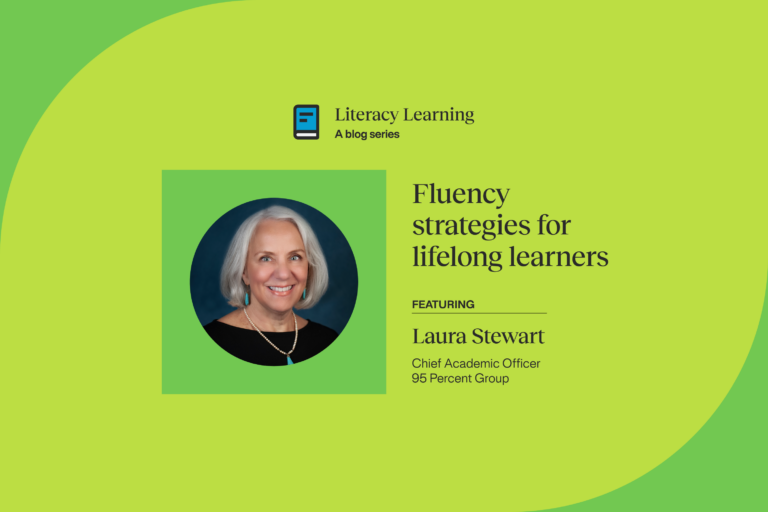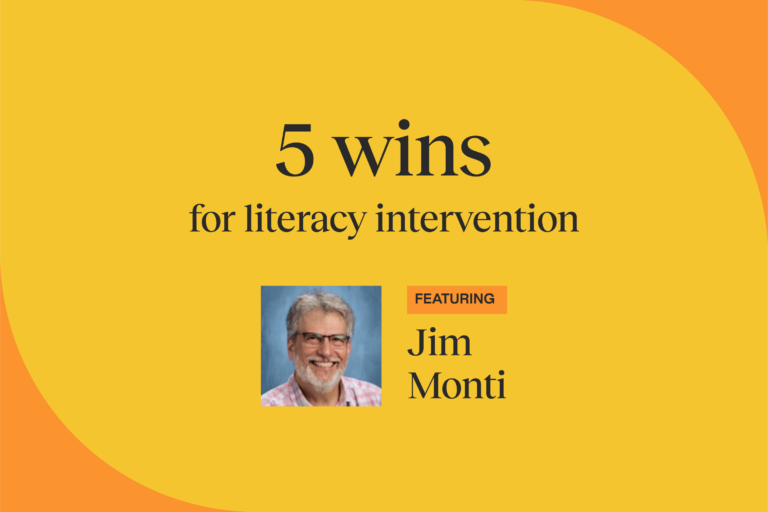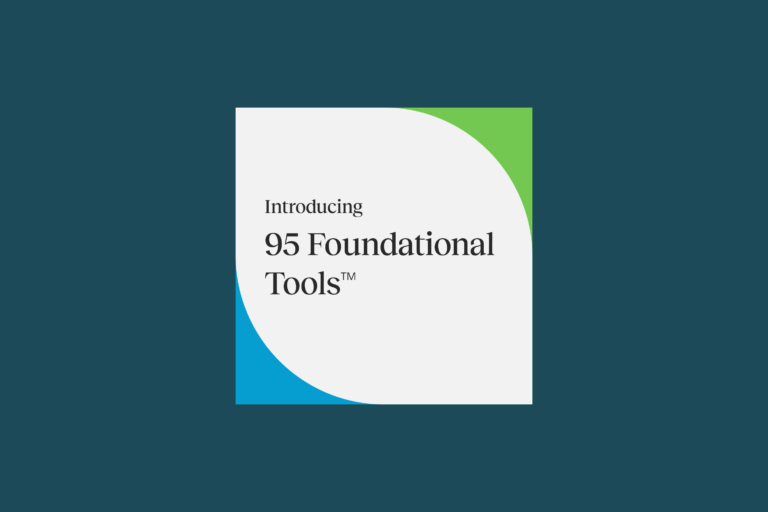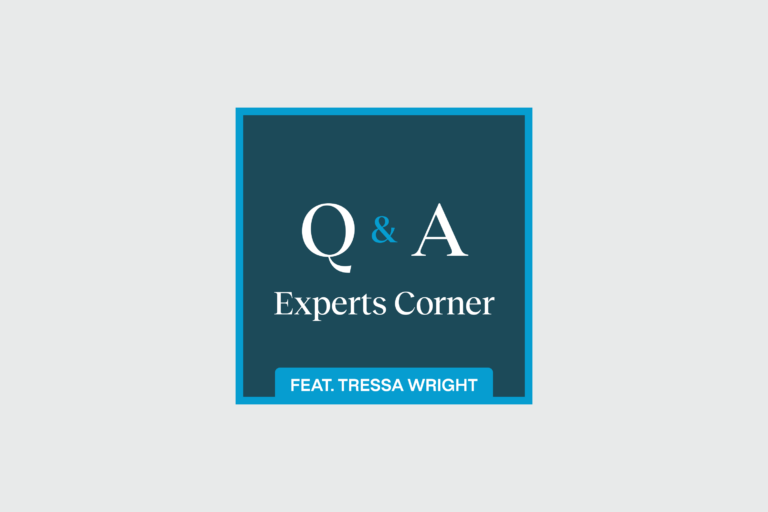Insights from our courageous literacy leader
95 Percent Group cofounder Susan Hall, EdD, offers insights on a turning point for the science of reading and best practices for aspiring changemakers.
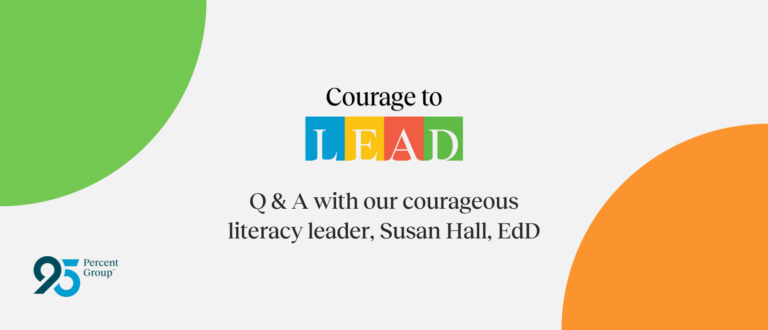
Recently, we had an in-depth discussion with Susan Hall, EdD, cofounder of 95 Percent Group, influential author, and early trailblazer in the science of reading movement. She shared insights into her journey as an “activated parent” and a woman entrepreneur. She also discussed the turning point in her career, which was pivotal in bringing the science of reading from research into practice. Read on for Susan’s insights into the importance of “ensuring others have access to what you know” and putting ideas into action. She also provides seven tips for getting started and 10 tips in courageous leadership best practices.
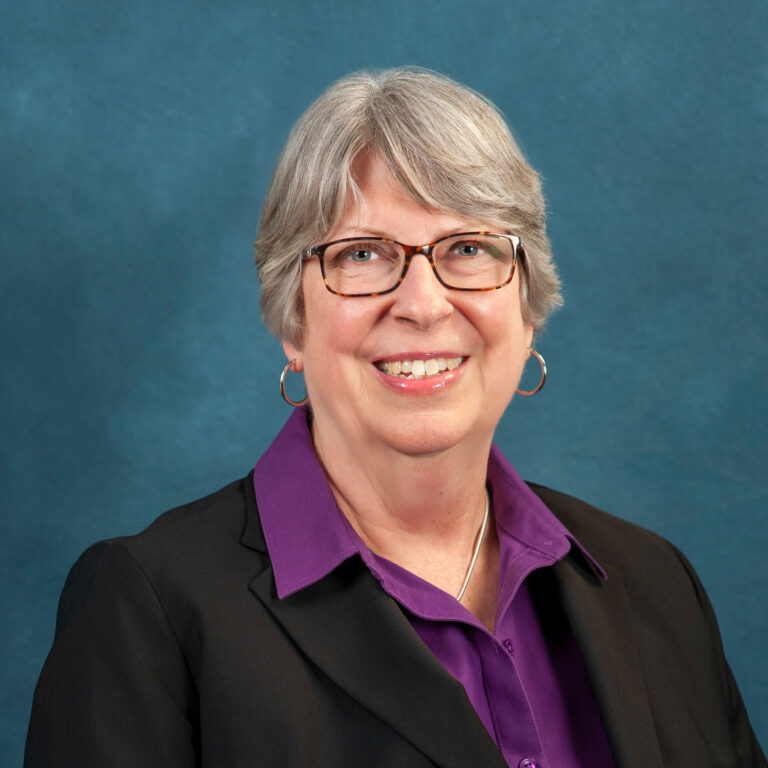
What saying embodies how you live and what you return to?
My husband, David, gave me this advice: “Follow your passion, the rest will follow. The income will follow. Do what you love and make a difference in the world.”
I had started out in a business career. I did my undergraduate work at Lawrence University, and then I went to Harvard Business School. I had a five-year business career in Fortune 500 companies, but the industry was not great for women back then, some 40 years ago.
Eventually, I found myself at a crossroads in my career. I was at a point where I was wondering if I should continue my work in business or if I could pursue my real passion for education and, in particular, literacy. My husband, David, and I had a two-income household and really relied on my salary.
Those words of advice from David gave me courage. They led us to found 95 Percent Group, and they are the words that I live by and return to often. We founded the company in 2005 with a vision to provide literacy to every child.
How did your son inspire your life’s work?
Our first child, Brandon, was five years old and had trouble reading. He got to first grade and said, “Why am I in the highest math group but in the lowest reading group?”
We talked to his teacher and that was the beginning of a major shift in my life. Brandon’s teacher said Brandon was fine, but I knew that he was frustrated. Finally, in the spring, I said to the teacher, “He’s not fine.” And she replied to me, “He’s not a year behind so I can’t refer him for testing yet.” I was amazed and said to myself: “We really have to wait and have him continue to feel badly about himself?” So, I had him privately evaluated, which a lot of people can’t afford to do. We received a diagnosis that he is dyslexic, which led me to the International Dyslexia Association (IDA).
I did a lot of research to try to figure out how to help him learn to read, and I realized I was touching on a big problem in our country. It also touched on my passion. I found myself at a turning point of not just wanting to help my son but also wanting to help every child learn to read well. I was an “activated parent,” but it was also important to me to advocate for all children.
I started exploring special education to figure out what was missing, but I quickly realized this was not just a special education problem. This was a general education problem related to how we were teaching children in the classroom. It was not the teacher’s fault; the system was not built to support teachers learning how to help children who struggle to read.
So, I needed to know more. I needed to learn more. As leaders, we are expected to have the answers, but it is okay to be vulnerable and say, “I don’t know!” It’s okay to recognize we don’t know what we don’t know. I wanted to know more about reading and reading intervention. I wanted to understand what it’s like for teachers and schools to teach reading.
I started my master’s in education, attended IDA conferences, and volunteered in schools. And on that journey, I met Louisa Moats and became one of the first national trainers of LETRS® (Language Essentials for Teachers of Reading and Spelling, the professional learning program founded by Dr. Moats). She agreed to coauthor with me the book Straight Talk about Reading: How Parents Can Make a Difference during the Early Years (1999). This was huge, and she was a huge role model in my work.
I believe that those things did not happen as a coincidence. It was a line of events that started with my son. The steps from there put me in the right place at the right time.
What were pivotal moments as you blazed your path?
I wrote my next book, I’ve DIBEL’d, Now What? (2006) and, because of it, I was invited to present in a number of districts and schools. And this led to the turning point that was the beginning of 95 Percent Group.
One of the districts that asked me to come and do training with them on the book was Seminole County in Florida. I worked with them for two years. I worked closely with the district literacy leader. I trained all of the reading coaches. Every single month I was a speaker for this district, and we worked on different topics. At the end of the two years, the literacy leader said to me, “Can we take that lesson-plan format that is in LETRS that you helped write and get the reading coaches and help them to write lesson plans on each of the skills that are in your continuum?”
I agreed to do this, and it was going to be a culminating and critical step. But we only had one day and wanted to give them all the tools they needed. So, we had all the reading coaches in the room and conducted the daylong session. The coaches were paired up to write the lesson plans with word lists. I was walking around the room and trying to answer questions and help them. After the day wrapped up, the district literacy leader and I sat down and started reading the coaches’ lesson plans. We got into them a little ways and we cried—we really cried! The lesson plans were not usable.
Even with as much training as we had done, the coaches were not able to create actual lessons they could implement in the classroom. It was devastating. But it gave me a huge aha moment too: even a highly trained educator is not necessarily able to take training and translate it into writing lesson plans. That is a different skill set. We can’t expect A to equal B. That was a huge moment for me.
The district literacy leader looked at me and said, “Susan, you have to write these lesson plans with your team.” And that was a turning point. I went back home and said, “Wow! I had never thought of writing curricula.” I didn’t even dream that I would do that one day. But it’s important to ensure that others have access to what you know, and this would be my way of accomplishing that.
I trained thousands of teachers in LETRS®. It was so important. It led me to understand that excellent professional development is one part of what we need in our schools. But we also need to give teachers tools so they can implement this training in practice—and that is why 95 Percent Group was formed. It was because I had trained so many teachers that I knew teachers needed professional learning and then they needed to be equipped with the right tools.
How did teachers react to the initial lesson plans you developed?
We started with a curriculum on phonological awareness and then we developed what is today the 95 Phonics Lesson Library™. Teachers were so appreciative of these resources. Equipping them with lesson plans meant freeing them up to listen carefully to what the student was saying and doing. The lesson plans we created, and that 95 Percent Group sells today, include replicable, repeatable routines that allow teachers to focus less on the process and more on the response. And they also allow students to focus less on the process and more on their learning. I finally really understood that we were doing teachers a service by giving them a set of routines—and we were doing students a service too. Everyone can be more effective, and more learning can happen, with easy-to-use routines.
There was some early reaction against this approach, such as: “Oh, it’s insulting to the teacher to give them scripted lessons.” I didn’t agree with that. We never, ever dishonored the teachers. The teacher was very much the center of instruction. As one of my 95 Percent Group colleagues, Judie Caroleo, said, “Lesson plans are the framework from which teaching occurs.” That’s absolutely right.
And, in fact, many of the products subsequently developed at 95 Percent Group have been driven by the teachers who have said, “We need this” and “Please do this.” We have really listened to the voice of the teacher, both the many educators inside the company and from our school partners, those people who are out there in the world helping inform what we do. That is really what allows us to take that teacher-centric approach.
What tips can you offer other changemakers?
- Follow your heart and the rest will follow.
- Seek out community; find your collaborators.
- Persevere respectfully.
- Be ready to pivot; be open to the need sometimes to change at a turning point.
- Keep learning; keep up with the science about helping children learn.
- It’s not just what you know, but what you do, that matters.
- Share your contributions as widely as you can.
What are your takeaways from some of the most courageous leaders you’ve observed?
I learned along the way from other leaders how to create change in schools and in districts. And I appreciate the people who allowed me to learn with them, including Deb Warner from Seminole County Public Schools in Florida, Deb Lyons from Brevard Public Schools in Florida, and Sharon Dunn from Panama-Buena Vista Union School District in California. And these are not the only leaders that I learned from. Believe me: I learned from a ton of leaders. The way I learned about how to affect change in a school and district was watching it happen in so many different places. As an observer, I could see where change was occurring, and where change was not occurring; then I could study and think about what the leader was doing to make that happen.
What was some good advice you received?
Joe Torgesen gave me some of the best advice. He said, “You seem determined so let me give you a piece of advice: get real. We are not going to be able to have the most qualified teachers working with struggling students. That is not a school model. So, we have to do better for all of our teachers. We need to equip every person working in schools and working in those small reading groups with what they need to help every child learn to read.”
Here are Susan’s 10 principles of effective leadership:
#1 Data is critical.
Data is critical. You need data. If you don’t have data, you can’t really get started. But it needs to be the right data.
Learning shouldn’t be one person’s view of how well students are doing versus another person’s view. As a leader, always ask for data to verify that a classroom method or resource actually works in the classroom, support data collection on student learning, and seek out new data from the field.
Follow up with teachers about their data and talk to them specifically about their classes. Ask them, “What can I do to help you improve this data?
#2 Choose new resources carefully.
You need to decide which new programs and materials to use—and it’s important to choose carefully. There are many products that purport to be based in the science of reading and they are not. We have to be wise consumers. Educators don’t have a lot of extra resources so we want to make our investment count. Talk to other educators and find out what works best for them. Look for efficacy studies and key validations for your resources, such as ESSA levels and Evidence for ESSA.
#3 Get the teachers in your school to go along with you.
The leaders that I have seen in my career who have created literacy change go with the “goers.” They even choose the grade-level teams that they think will “go” with them first. So, they literally figure out and give some thought to “Who are the ones who are the go-getters? Who are the ones who will follow my lead?”
Also, be open and supportive of different grade-level teams. Yes, we want to start with the lowest grade-level teams because change happens faster and results happen faster there. But, sometimes, your kindergarten team may not come along with you right away, so don’t feel you have to start with kindergarten. You need success. Success breeds success. Go with the goers first.
#4 If the culture is damaged, coach people out.
There are always doubters. You can’t always get everybody to go with you. Here’s my advice, which I learned from the leaders I watched: kill them with kindness and support. Be kind and supportive to the doubters. But there may also be a time when you have to admit, “Whoa, okay! Never mind!” And the point is this: if the doubters are doing things behind the scenes to damage the culture and trying to undermine what you’re trying to accomplish, it is time to do something about it. One of the principals that I admire is a person who had to coach teachers out the door. This principal would talk to them and say: “You don’t seem to be on board with this. This is what we’re doing at this school. If you’re uncomfortable, you may want to think about transferring.”
#5 Set measurable goals.
Set measurable and clear goals, such as “By the end of X date, 85 percent of first graders will be in the green or blue zone.” Be very concrete and then keep checking in: “Are we going to make 85 percent? What will it take to make 85 percent?” Set goals for each grade-level team and do this with them.
#6 Be everywhere.
Be everywhere. This is what I learned from lots of the principals whom I got to shadow: be everywhere. Expect that you will walk the classrooms.
For instance, I had a principal who I worked with in Florida, and she was the leader of a huge building with 10 grade-level classrooms at each grade level. I asked her, “How do you keep track of when intervention is happening in each grade?” She pulled out of her pocket this little card with a schedule on it, and she said, “I keep this in my pocket every day when I walk through this building and visit the classrooms.”
You know instantly if the principal is walking the building, because if she walks in a room and everything stops, or all the kids turn around, she doesn’t walk the building very much. But if everything keeps going on all the time, regardless of whether she’s in the back of the room or not, you know she is doing this regularly.
So, you have to walk the building and walk during reading intervention time or the literacy block. You’ve got to walk. You have to attend grade-level team meetings. Not all of them. You can’t
attend them all—but pick key ones.
#7 Don’t take on too many initiatives.
Literacy is the most important thing we can do. So focus on it. We do our teachers such a disservice when we take on too many things and ask them to take on too many things. Ask them: “How can I help you clear off your plate all of the other things that are going to come your way? How can I help so you don’t take on too many initiatives at once?”
Support them and help find really creative ways to celebrate successes too. We all need those small celebrations along the way.
#8 Leaders should never stop learning.
Keep reading all the time. Learn with your teachers.
And here’s something else I’ve learned from district-level leaders: often we forget to invest in the professional development of administrators. Hire a one-on-one coach for the principals whose data does not reflect progress. Try to help them help their building improve. It’s the same as with teachers: provide your principals with lots of support and lots of kindness.
#9 Provide ongoing coaching.
Teachers need coaching if you want implementation, and if you want change. Coaching is the way to go, in addition to either online courses or workshops. At the district level, set goals just like you do at the building level. Set goals with your principals. Make sure that they have goals for each grade level. Make sure they have literacy goals for the percent of students who will reach or exceed benchmark levels. Then, hold your principals accountable.
#10 Always keep students at the center.
Make sure your decisions are student-driven. It helps in making tough decisions, and it helps you explain these changes.
What’s next for you, Susan?
There are two key areas I am working on currently. The first is higher education. I want to give back in this area and especially support first-generation high school students who are going to college. I also want to give back through donations to colleges to support their important work. My second area is that I want to mentor women business owners who are finding their way and pursuing their passions like I did.
Watch on demand: Courageous leaders webinar series!
Join Laura Stewart, Chief Academic Officer of 95 Percent Group, as she hosts Courageous Leaders, a transformative webinar series featuring insightful discussions with prominent literacy changemakers. Whether you’re a practiced literacy leader or newly aspiring to this role, our sessions on courageous leadership will provide the knowledge, tools, and inspiration to empower the next generation of readers and lifelong learners.
